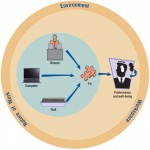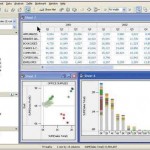Throughout the tutorial your awareness of human–computer interaction (HCI) and its importance to your task as a systems analyst has grown. While awareness is important, by now you recognize that you need to master the concepts surrounding HCI as well … [Read more...] about Human–Computer Interaction (HCI)
Human–Computer Interaction
Understanding Human-Computer Interaction (HCI)
Designing for HCI means “Ensuring system functionality and usability, providing effective user interaction support, and enhancing a pleasant user experience.” Furthermore, “The overarching goal is to achieve both organizational and individual user … [Read more...] about Understanding Human-Computer Interaction (HCI)
Usability (Human-Computer Interaction)
Usability is a term that is defined differently depending on which branch of science you are investigating. For our purposes in exploring usability through an HCI lens, we will try to focus on usability as a way for designers to evaluate the systems … [Read more...] about Usability (Human-Computer Interaction)
Physical Considerations in HCI Design
In Chapters "Designing Effective Output", "Designing Effective Input", and "Designing Databases" you learned the basis for sound design of screens, forms, Web sites, and databases. This included the special use of fonts, color, and layout design to … [Read more...] about Physical Considerations in HCI Design
Considering Human Limitations, Disabilities, and Design (HCI)
All humans have limitations in their physical capabilities. Some are immediately visible, others are not. When designing from an HCI perspective, you start realizing that limitations are often discussed in terms of disabilities. The application of … [Read more...] about Considering Human Limitations, Disabilities, and Design (HCI)
Types of User Interface
In this section, several different kinds of user interfaces are described, including natural-language interfaces, question-and-answer interfaces, menus, form-fill interfaces, command-language interfaces, graphical user interfaces (GUIs), and a … [Read more...] about Types of User Interface
Guidelines for Dialog Design (HCI)
Dialog is the communication between the computer and a person. Well-designed dialog makes it easier for people to use a computer and lessens their frustration with the computer system. Recall the elements of the TAM (technology acceptance model) … [Read more...] about Guidelines for Dialog Design (HCI)
Feedback for Users (Human-Computer Interaction)
All systems require feedback to monitor and change behavior. Feedback usually compares current behavior with predetermined goals and gives back information describing the gap between actual and intended performance.Because humans themselves are … [Read more...] about Feedback for Users (Human-Computer Interaction)
Special Design Considerations for Ecommerce
Many of the user interface design principles you have learned concerning feedback also extend to designing ecommerce Web sites. A few extra considerations shown in this section can give your Web interface designs improved functionality. Soliciting … [Read more...] about Special Design Considerations for Ecommerce
Designing Queries (Human-Computer Interaction)
When users ask questions of or communicate with the database, they are said to query it. Six different types of queries are among the most common. Your careful attention to query design can help reduce users’ time spent in querying the database, help … [Read more...] about Designing Queries (Human-Computer Interaction)






